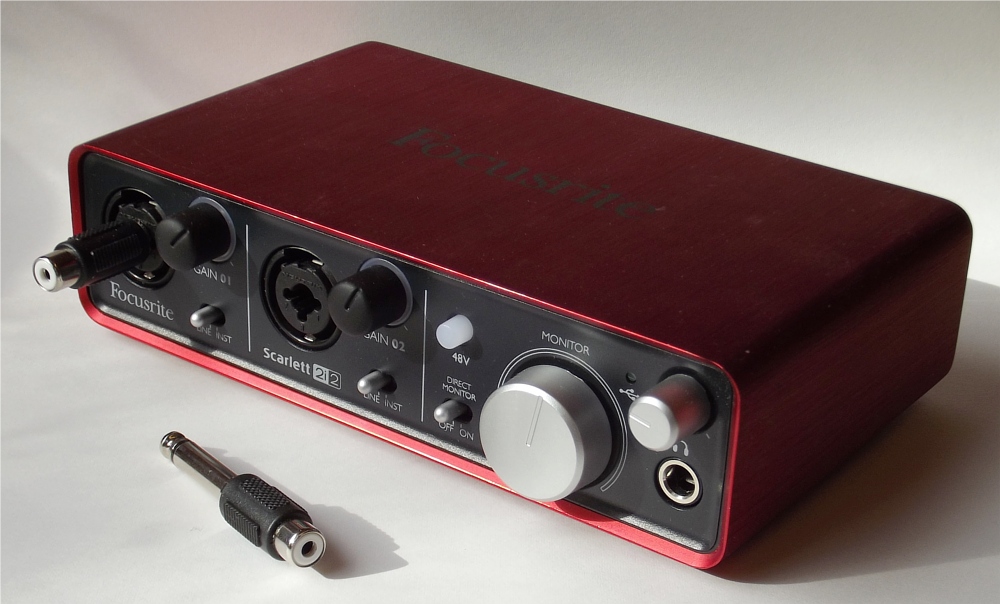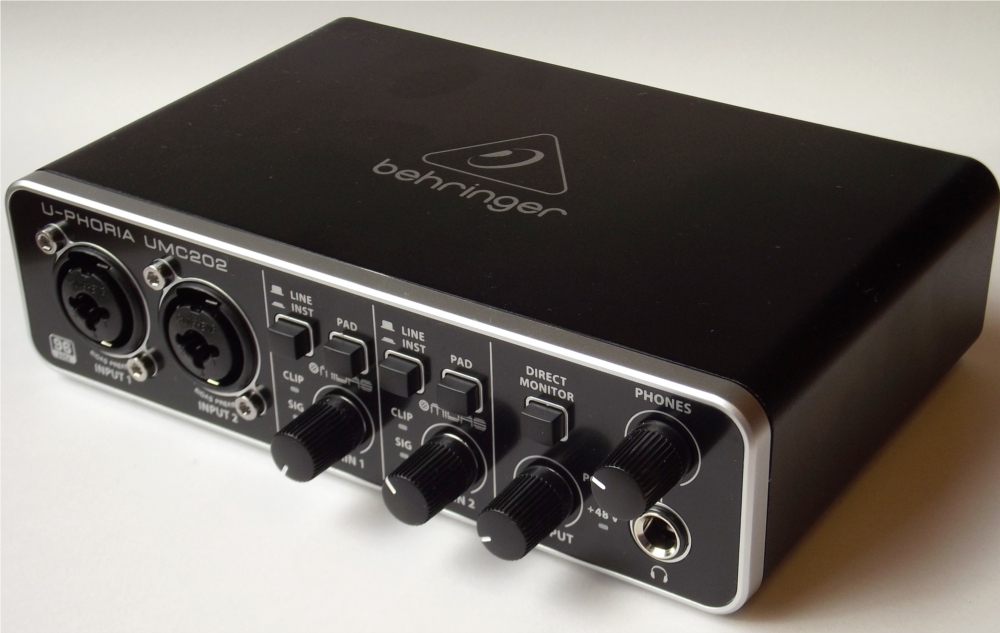
Phono socket side of Behringer UCA202

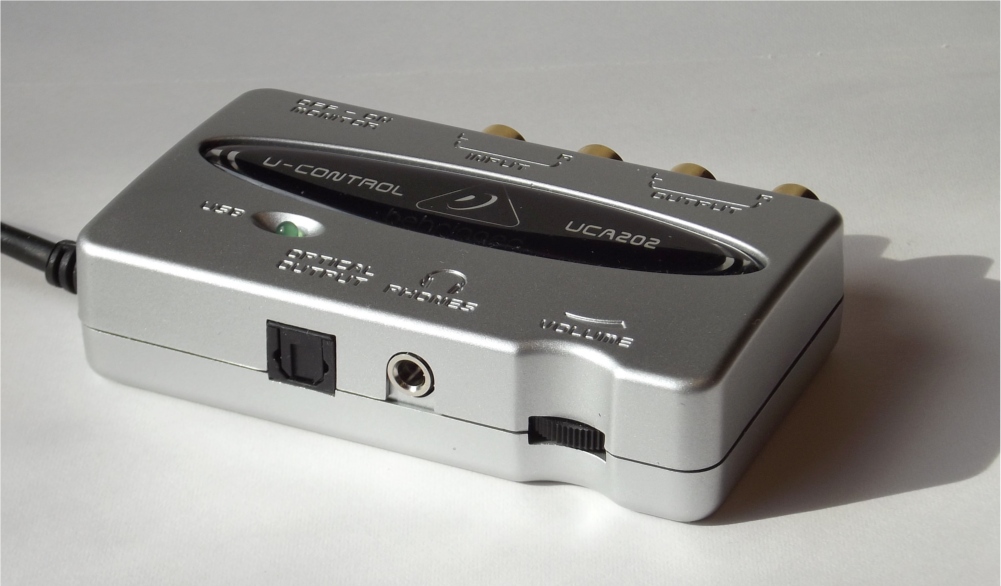
|
On Balance.
Most home audio equipment uses ‘unbalanced’ analogue interconnections. This is usually based on lengths of coaxial cable terminating in phono (RCA) plugs. The outer screen makes a ground or zero voltage connection between units. This means that although signal current may flow in the screen, the screen’s voltage stays at about zero volts. The signal voltage is then conveyed using the inner, central, wire. However most studio equipment tends to use ‘balanced’ connections. These have three wires, and typically use 3-pin XLR connectors or TRS (tip-ring-sleeve) 1/4" jacks. For such balanced connections the signal appears as a difference in voltage between two of them with the ground (0 Volts) level carried separately by a third wire. Balanced outputs therefore tend to produce two output voltage patterns, one being a mirror image or inverse of the other. Balanced signal inputs detect the difference in voltage between these two signal wires and try to ignore the ground potential. Such balanced arrangements can help a system to reject unwanted interference or hum. Hence may be very useful when low level signals are being carried over long connections in an electronically ‘noisy’ environment. In practice the two signal wires of a balanced connection are often called the ‘hot’ and ‘cold’. The ‘hot’ (+ve) wire carries the audio signal pattern and the ‘cold’ carries the opposing voltage. A real complication here is that such balanced system may or may not ‘float’. In theory all that should matter is the difference in voltage between the ‘hot’ and ‘cold’ wires. But in practice it is common for a device to apply voltages which are roughly equal and opposite with respect to ground (0 Volts). So when an output device is applying , say, plus 1 volt to the ‘hot’ wire it will apply minus 1volt to the ‘cold’. 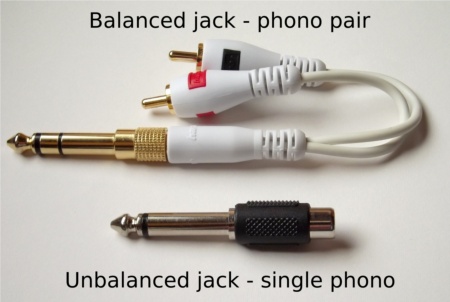
Fortunately, the 2i2 and UMC202 use ‘combination’ connectors for their inputs – XLRs for microphones, with a central socket for 1/4" jacks to input ‘line’ level from other equipment as well as ‘instrument’ input from, say, an electric guitar. Even better, the inputs will accept 1/4" TS (tip-sleeve) ‘mono’ jacks. These link together the ground and ‘cold’ connections at the input and let you use the inputs for a balanced input signal. 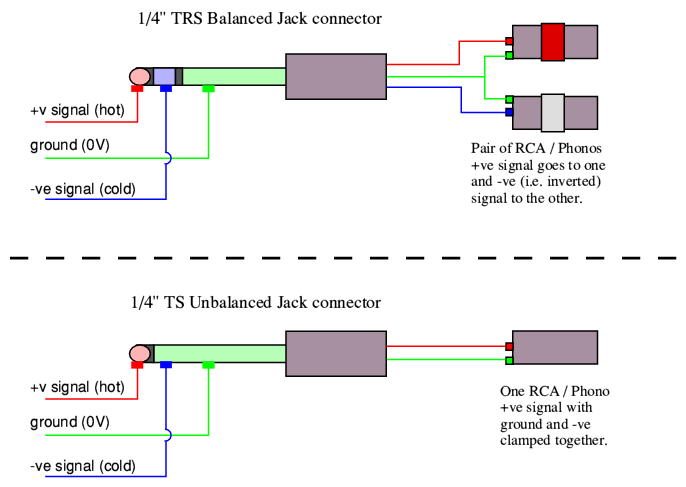
I did also quickly test using the 2i2’s line outputs. Both the 2i2 and UMC202 provide balanced output signals via a pair of TRS jack sockets. I tried two different adaptor arrangements when testing these outputs. One was to use TS unbalanced adaptors of the same kind as I used for inputs to the ADC. The other was to use TLS adaptors that gave the +ve and -ve signals on two separate phonos per channel. The balanced outputs from some devices may not be happy to have their -ve (‘cold’) output shorted to ground. So using a TRS jack and just one of the phonos (shown above with a red sleeve) to take the +ve output may be advisable in some cases, leaving the -ve (‘cold’) unconnected. However that may not work with a true ‘floating’ output using internal signal transformers. For those you’d need to use the TS-phono adaptors that ties the -ve to ground to get an unbalanced output for home hifi equipment. So the choice of the adaptor method will depend on the device you are using. In practice, though, I found the 2i2 outputs worked quite happily using either arrangement. |
